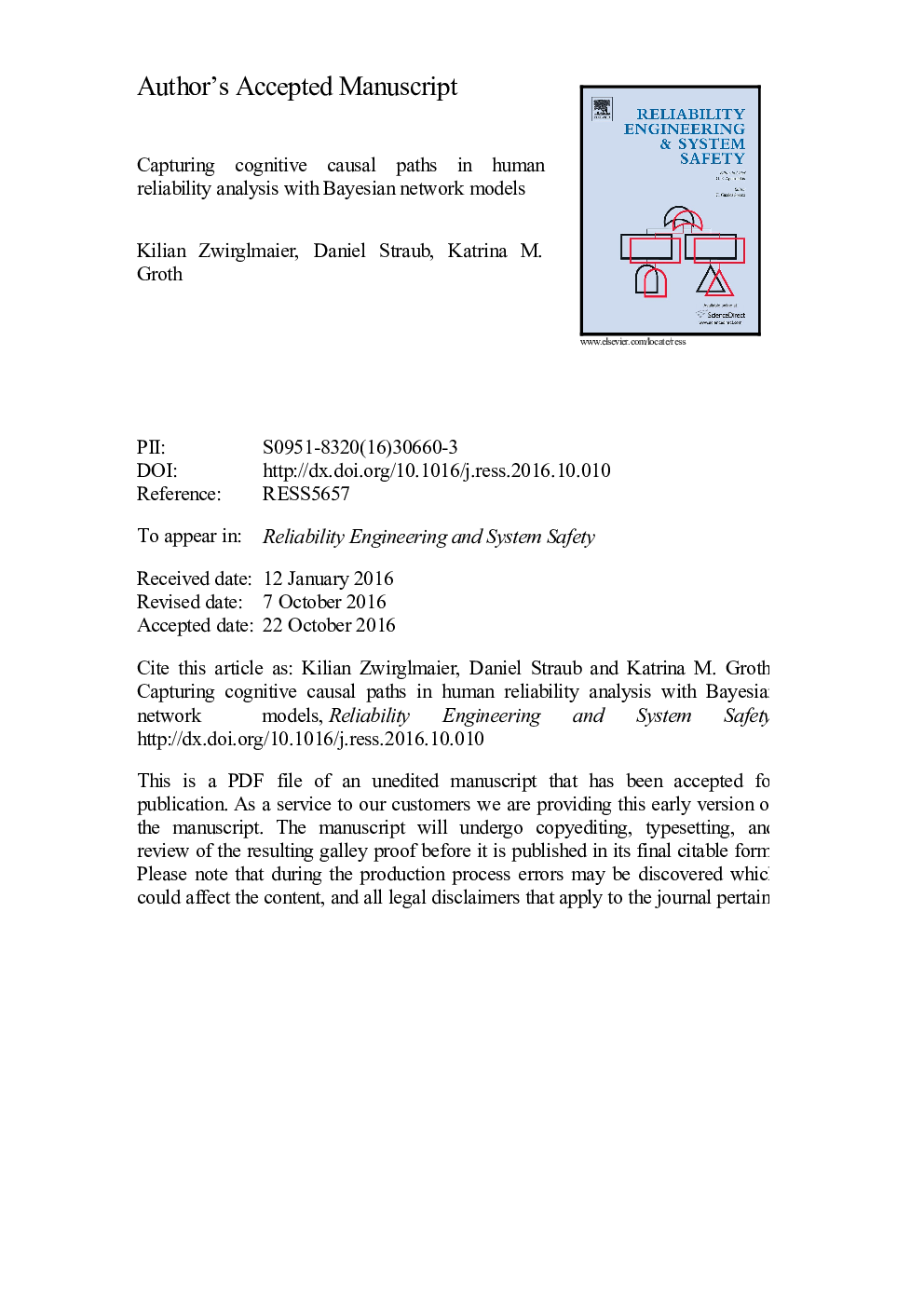| Article ID | Journal | Published Year | Pages | File Type |
|---|---|---|---|---|
| 5019583 | Reliability Engineering & System Safety | 2017 | 32 Pages |
Abstract
reIn the last decade, Bayesian networks (BNs) have been identified as a powerful tool for human reliability analysis (HRA), with multiple advantages over traditional HRA methods. In this paper we illustrate how BNs can be used to include additional, qualitative causal paths to provide traceability. The proposed framework provides the foundation to resolve several needs frequently expressed by the HRA community. First, the developed extended BN structure reflects the causal paths found in cognitive psychology literature, thereby addressing the need for causal traceability and strong scientific basis in HRA. Secondly, the use of node reduction algorithms allows the BN to be condensed to a level of detail at which quantification is as straightforward as the techniques used in existing HRA. We illustrate the framework by developing a BN version of the critical data misperceived crew failure mode in the IDHEAS HRA method, which is currently under development at the US NRC [45]. We illustrate how the model could be quantified with a combination of expert-probabilities and information from operator performance databases such as SACADA. This paper lays the foundations necessary to expand the cognitive and quantitative foundations of HRA.
Keywords
CPTTHERPCFMPIFHEPPRAHRAHSIPMFHuman-system interfaceHFEATHEANANRCAcrSpsfProbability mass functionHuman Error ProbabilityProbabilistic risk assessmentHuman reliability assessmentBayesian updatingProbability density functionConditional Probability TableDecision treeDAGBayesian networkBayesian networksPerformance shaping factorCognitive factorsPdfNuclear Regulatory CommissionDirected acyclic graph
Related Topics
Physical Sciences and Engineering
Engineering
Mechanical Engineering
Authors
Kilian Zwirglmaier, Daniel Straub, Katrina M. Groth,
